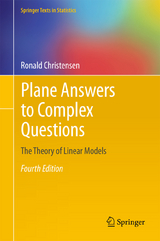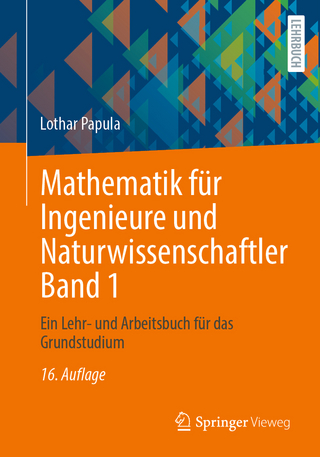
Plane Answers to Complex Questions
Springer-Verlag New York Inc.
978-1-4419-2971-6 (ISBN)
The third edition of Plane Answers includes fundamental changes in how some aspects of the theory are handled. Chapter 1 includes a new section that introduces generalized linear models. Primarily, this provides a defini tion so as to allow comments on how aspects of linear model theory extend to generalized linear models. For years I have been unhappy with the concept of estimability. Just because you cannot get a linear unbiased estimate of something does not mean you cannot estimate it. For example, it is obvious how to estimate the ratio of two contrasts in an ANOVA, just estimate each one and take their ratio. The real issue is that if the model matrix X is not of full rank, the parameters are not identifiable. Section 2.1 now introduces the concept of identifiability and treats estimability as a special case of identifiability. This change also resulted in some minor changes in Section 2.2. In the second edition, Appendix F presented an alternative approach to dealing with linear parametric constraints. In this edition I have used the new approach in Section 3.3. I think that both the new approach and the old approach have virtues, so I have left a fair amount of the old approach intact. Chapter 8 contains a new section with a theoretical discussion of models for factorial treatment structures and the introduction of special models for homologous factors. This is closely related to the changes in Section 3.3.
1 Introduction.- 2 Estimation.- 3 Testing Hypotheses.- 4 One-Way ANOVA.- 5 Multiple Comparison Techniques.- 6 Regression Analysis.- 7 Multifactor Analysis of Variance.- 8 Experimental Design Models.- 9 Analysis of Covariance.- 10 Estimation and Testing in General Gauss-Markov Models.- 11 Split Plot Models.- 12 Mixed Models and Variance Components.- 13 Checking Assumptions, Residuals, and Influential Observations.- 14 Variable Selection and Collinearity.- Appendix A: Vector Spaces.- Appendix B: Matrix Results.- B.1 Basic Ideas.- B.2 Eigenvalues and Related Results.- B.3 Projections.- B.4 Miscellaneous Results.- B.5 Properties of Kronecker Products and Vec Operators.- B.6 Tensors.- B.7 Exercises.- Appendix C: Some Univariate Distributions.- Appendix D: Multivariate Distributions.- Appendix E: Inference for One Parameter.- E.1 Confidence Intervals.- E.2 Hypothesis Testing.- Appendix F: Significantly Insignificant Tests.- F.1 Lack of Fit and Small F Statistics.- F.2 The Effect of Correlation and Heteroscedasticity on F Statistics.- Appendix G: Randomization Theory Models.- G.1 Simple Random Sampling.- G.2 Completely Randomized Designs.- G.3 Randomized Complete Block Designs.- References.- Author Index.
| Erscheint lt. Verlag | 3.12.2010 |
|---|---|
| Reihe/Serie | Springer Texts in Statistics |
| Zusatzinfo | 1 Illustrations, black and white; XIX, 476 p. 1 illus. |
| Verlagsort | New York, NY |
| Sprache | englisch |
| Maße | 155 x 235 mm |
| Themenwelt | Mathematik / Informatik ► Mathematik ► Angewandte Mathematik |
| Mathematik / Informatik ► Mathematik ► Wahrscheinlichkeit / Kombinatorik | |
| Sozialwissenschaften ► Soziologie ► Empirische Sozialforschung | |
| ISBN-10 | 1-4419-2971-1 / 1441929711 |
| ISBN-13 | 978-1-4419-2971-6 / 9781441929716 |
| Zustand | Neuware |
| Informationen gemäß Produktsicherheitsverordnung (GPSR) | |
| Haben Sie eine Frage zum Produkt? |
aus dem Bereich



